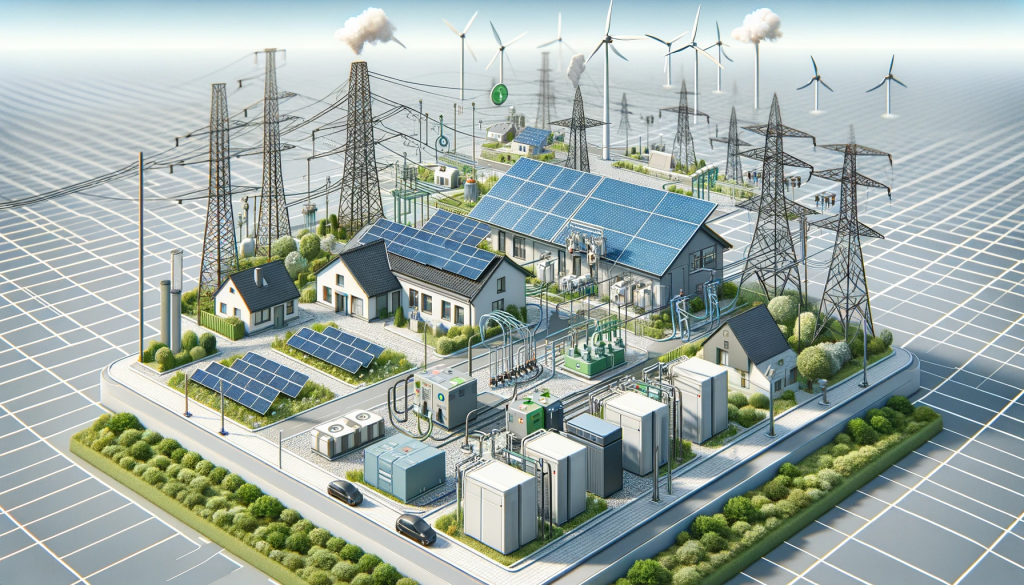Australia is at the forefront of the technological revolution. It is pioneering advanced approaches and solutions in the APAC (Asia-Pacific) region. The subject today is one that resonates deeply within the tech ground – grid modernization and its role in tech innovation.
The traditional power grid is increasingly unable to meet today’s extensive energy demands says The Local Electrician. However, Australia is leading the way with initiatives aimed at remodeling this aged system into a digitized, efficient, and clean energy network.
In this post we scrutinize the major challenges faced and assess how companies are implementing innovative solutions while positioning themselves as global pioneers in APAC’s tech innovation.
Australia’s Smart Tech Sectors
Your journey into the innovative landscape of Australia’s technology sector is exciting and multifaceted. It begins with groundbreaking explorations in sustainable air travel, as smart minds tackle challenges of Electric Vertical Takeoff and Landing (eVTOL) aircraft, leveraging advanced aerodynamics techniques.
Another area of impressive growth is in construction management, where artificial intelligence is transforming daily operations. AI in this setting allows for streamlined project coordination, improved budget management, and enhanced safety protocols, ushering a new era in construction efficiency.
The healthcare sector is benefiting from smart tech advancements too. Cutting-edge AI-driven platforms are providing technologically robust care solutions, thus boosting healthcare outcomes. They operate across multiple facets, including data analytics, digital identity management, patient verification, and fraud detection.
| City | Tech Focus Area | Example |
| Brisbane | eVTOL Aircrafts & Robotics | Aloft Aerodynamics & Emesent |
| Sydney | AI Software & Energy Projects | Brainchip & FutureGen |
| Melbourne | Construction Management & Packaging Solutions | Archer & Cardboard |
| Perth | Cybersecurity & Healthcare Platforms | Cribber & Genider |
| Table: Overview of Tech Innovation across Australian Cities |
To discover more about the growing presence of technology in multiple sectors across Australian cities, you may want to visit CSO Group.
Moving forward, the energy sector is revolutionizing through AI technologies as well. Intelligent energy management solutions are helping improve efficiency and sustainability as never before. They are contributing towards a greener future by creating sophisticated renewable energy models.
The Internet of Things Evolution
The Internet of Things (IoT) has been revolutionizing various sectors through its ability to proactively detect and mitigate water damage.
- IoT equips real-time monitoring and automated processes that minimize the risks of water damage.
- Through IoT devices, water flow, moisture levels, and weather conditions can be monitored to prevent water related issues.
- IoT data analytics empower insurers to identify and respond early to potential issues, reducing severity and claim frequency.
- By incorporating IoT with other technological solutions, such as weather forecasting and GIS mapping, risk assessment and mitigation improve significantly.
Apart from these applications, IoT is also making news in a variety of other areas such as digital twin management, edge IoT for industrial automation, artificial intelligence integration, 5G networking and cellular connectivity among others.
Artificial Intelligence Progress
Artificial Intelligence has gained traction with its captivating bidirectional relationship with theories of learning through the merging of data and methods to enhance the learning outcomes.
You’ll find that AI is not just about machine learning. It has progressed to represent a sophisticated symbiosis between machine learning and learning theories, drawing inspiration from social and behavioral sciences.
The Rise of Machine Learning
One fascinating aspect within AI is Machine Learning. The groundbreaking innovations in this field have propelled applications in deep learning, essentially imitating human brain functions.
ML’s connection to the introduction of learning theory shows how technology and science intertwine to produce advancements that improve our lives daily.
Friendly Data Analysis with Python
Python stands out prominently in the programming world due to its simplicity and robustness, particularly in areas such as data analysis.
An understanding and familiarity with Python’s commands for package installation, data importing and viewing contribute greatly to one’s proficiency in this programming language, enhancing their efficiency with data analysis.
Natural Language Processing (NLP)
Natural Language Processing, another integral part of AI, consists of sophisticated methods such as Part of Speech tagging and sentence parsing which assist in dissecting text data effectively.
This advanced component plays a major role in sentiment analysis, where it is used to capture users’ attitudes towards learning.
The Future: Generative AI & Conversational Discovery
Looking ahead, the scope of AI is expanding beautifully into fields like generative AI. This innovation has the potential to transform information discovery by making it more tailored, participative, and conversational.
As for the Conversational Discovery aspect of AI, it intends on transitioning search functionality towards a more organic, question-and-answer format.
This format not only facilitates a smoother user experience but also makes information retrieval more intuitive and efficient. You can take a deeper look into these innovations at The AI Moment.
Advancing Digital Technology
Your exploration into digital technology advancements in Australia begins with understanding digital twins. They serve a key role in enhancing operational proficiency, pinpoint product development, and improving customer relations.
- Detailed analysis: A report on Advancing Digital Twins Beyond Time Series Data elaborates their impact on business operations and innovation in the region.
- Industry focus: Manufacturing, healthcare, and construction are industries energetically integrating digital twins for revolutionary transformation. However, they must overcome certain challenges to fully implement these technologies.
- Business value: The benefits of digital twins aren’t merely theoretical; they’re financial too. Significant cost savings and improved revenues are attainable with the successful incorporation of digital twins.
- Actionable guidance: For companies eager to harness digital twin technology, adopting a structured approach is crucial. This includes syncing with existing IT infrastructure and offering thorough staff training.
Their impact enhances core areas such as product development while encouraging innovative methods for customer engagement.
The Tech Revolution
Throughout this blog post, you’ve experienced learning about Australia’s influential role in tech innovation in the Asia-Pacific region. As a reader, their contributions and advancements would have intrigued you.
Moving forward, consider staying updated on the latest tech developments, like those discussed in our blog. For related content ranging from grid changes to domestic electrical issues, check here.




























